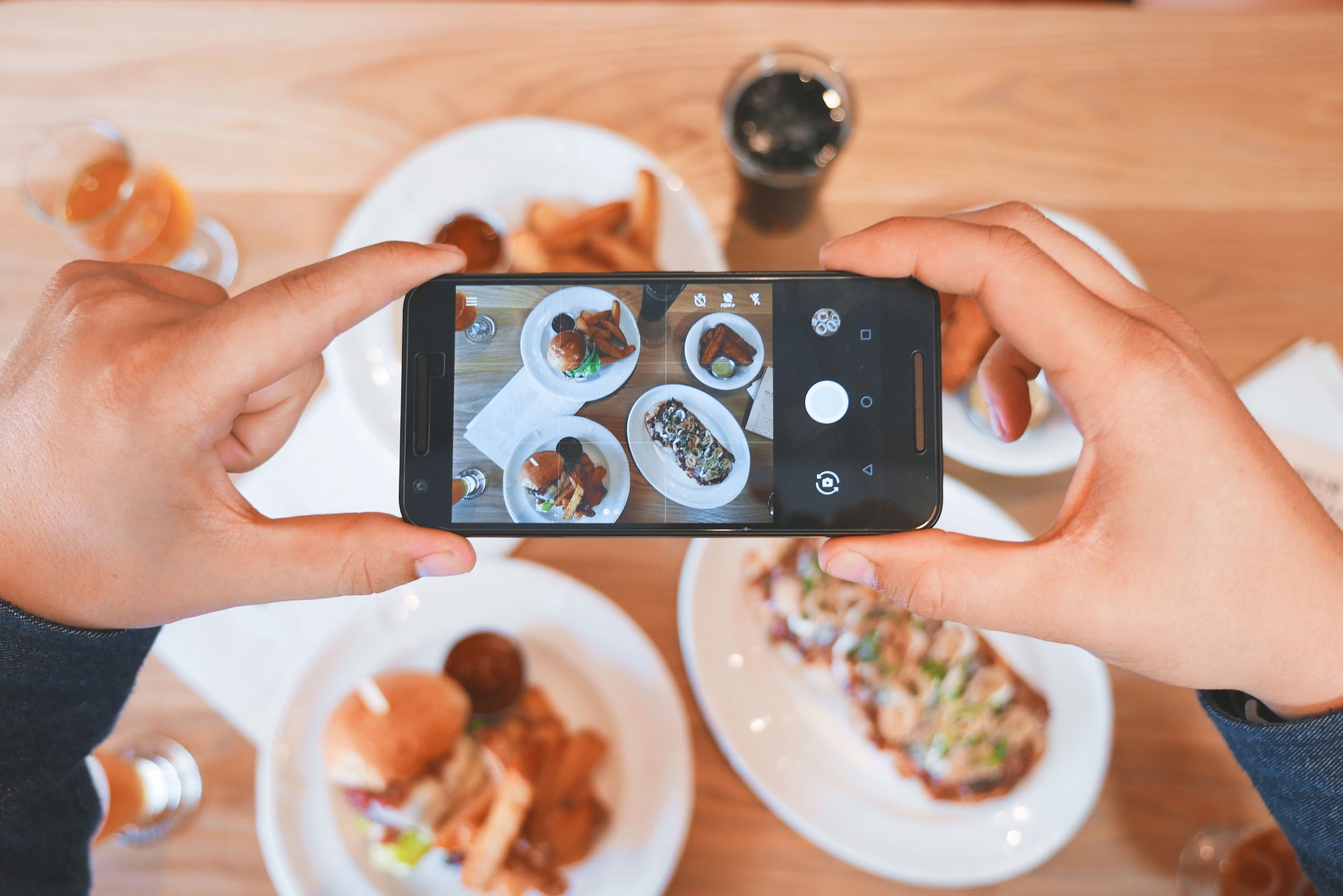Can you imagine photography-free dining? It isn’t easy. I’d bet that the food-photo to phone-call ratio on many teens’ smartphones favors food images. Food dominates much of social media, we share food pictures obsessively, sometimes as often as mama bird shares real food with her newly hatched chicks.
And while so many of us document our meals and snacks for a multitude of unclear reasons, there are professionals making a living off their stylized, gorgeous photos. Food manufactures and brands seek influencers with engaging content in order to reach their fanbase. Products are integrated into the feed of influencers in a way that makes it hard to discern that’s marketing and what’s content.
It’s already established that ads on TV and other traditional media affect kids’ food choices, and play a part in the obesity epidemic.
Instagram marketing may have just the same effect.
FIRST WITH YOUR EYES, THEN WITH YOUR MOUTH
A new study in Pediatrics examined the effect of Instagram influencer marketing. 178 British kids, aged 9-11 years were randomly assigned to one of three influencer-marketing conditions: healthy food images, unhealthy food images, or non-food images as the control.
The influencers were a 26-year-old female video blogger and a 23 year-old male YouTube video blogger with millions of followers and subscribers. Each child was exposed to both the male and the female influencer, and was shown mock, photo-edited images that looked like a real Instagram feed with 6 images, 3 test ones, and 3 fillers. Test images had the celebrity holding an unhealthy snack – cookies – or healthy snacks – a banana – or a branded control that isn’t food – sneakers.
After looking at the images the kids were treated to snacks. They could choose from jelly candy, chocolate buttons, carrots or grapes, and eat as much as they wanted.
Exposure to marketing affected the kids’ immediate intake:
Kids shown the unhealthy Instagram feed consumed 26 percent more calories overall than those shown no food, and 15 percent more than those shown healthy foods.
Kids shown the unhealthy Instagram feed consumed 32 percent more calories from unhealthy snacks than those shown no food (control), and 20 percent more than those shown healthy foods.
COULD INSTAGRAM MAKE YOU OVEREAT?
I think that nobody will be surprised to learn that marketing a product increases its sales – why else would brands invest money in it?
But another growing concern is just the sheer abundance of junk food offline and online, because junk food marketing, we’re learning, not only lifts the sales of the advertised brand: it has an overall effect of making us eat more.
Junk food abundance, both in real life – offered wherever kids go, sold in every corner, vended from machines placed strategically – and in images, may be central to our obesogenic environment.
It turns out that just having appetizing food around, even in a picture, might push kids to eat just a little bit more. And years of just an extra half cookie can be enough to launch a kid into overweight or obesity.
As kids shift their media consumption towards mobile and social media it’s imperative that we learn how new technologies and content impact their habits and health.
Dr. Ayala


